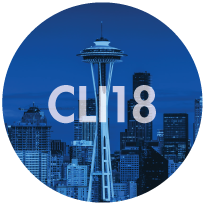ASK SQD: Using the Kano Model with Customer Survey Feedback
53 Posts
The "Ask SQD" column is a chance for you to ask for help with a particularly vexing problem. A panel of experts will provide a summarized, actionable response. Contact us if you have a question or a service-related story you’d like to share!
Question: We gather customer and employee feedback through ongoing surveys. What’s a good way to filter through all of this feedback to identify ways to drive innovation and stay ahead of our competitors?
Answer:
In the Service Quality Body of Knowledge, there are 6 dimensions outlined for service innovation. Among these, SQBOK indicates, "the new service concept is the most widely recognized service innovation dimension, as it relates to the value that is created by the service provider in collaboration with the customer. The innovation is often a new idea of how to organize a solution to a problem or a need of a customer."1
One way to focus your analysis of survey feedback to identify service innovation opportunities is to filter your feedback based on the Kano model. The Kano model tells us there are three different types of customer needs:
1. Expected Needs – These are the things that we MUST have to simply be viable in the market. Sometimes called hygiene needs, if you don’t meet these expectations you will dissatisfy at best.
2. Normal Needs – These are expressed desires from your customers, which you can satisfy across a range. The degree to which you deliver on normal needs will produce a corresponding level of customer satisfaction or dissatisfaction.
3. Exciting Needs – These are the differentiators, the innovations, the delighters. But remember – the delighters of today become the normal needs of tomorrow and part of the minimum expectations in the future. Organizations are continually challenged to identify and deliver the exciters while they are still part of this highest level of need.
See ASQ Kano Model Tutorial HERE
Filter your survey feedback to the very top respondent scores (top box on a Likert scale; top Promoters on an NPS scale) and take a look at what your most loyal customers are saying. Fully satisfied customers will often provide insight into ways you can continue to thrill them. Consider inviting some of these customers into a panel or focus group discussion if you can – How are they using your product(s) in innovative ways? What other product(s) do they use in conjunction with yours? How would they like to use your product or service in the future?
1 ASQ SQBOK v3.0, Section 5.3, pages 92-93
Question: We gather customer and employee feedback through ongoing surveys. What’s a good way to filter through all of this feedback to identify ways to drive innovation and stay ahead of our competitors?
Answer:
In the Service Quality Body of Knowledge, there are 6 dimensions outlined for service innovation. Among these, SQBOK indicates, "the new service concept is the most widely recognized service innovation dimension, as it relates to the value that is created by the service provider in collaboration with the customer. The innovation is often a new idea of how to organize a solution to a problem or a need of a customer."1
One way to focus your analysis of survey feedback to identify service innovation opportunities is to filter your feedback based on the Kano model. The Kano model tells us there are three different types of customer needs:
1. Expected Needs – These are the things that we MUST have to simply be viable in the market. Sometimes called hygiene needs, if you don’t meet these expectations you will dissatisfy at best.
2. Normal Needs – These are expressed desires from your customers, which you can satisfy across a range. The degree to which you deliver on normal needs will produce a corresponding level of customer satisfaction or dissatisfaction.
3. Exciting Needs – These are the differentiators, the innovations, the delighters. But remember – the delighters of today become the normal needs of tomorrow and part of the minimum expectations in the future. Organizations are continually challenged to identify and deliver the exciters while they are still part of this highest level of need.
See ASQ Kano Model Tutorial HERE
Filter your survey feedback to the very top respondent scores (top box on a Likert scale; top Promoters on an NPS scale) and take a look at what your most loyal customers are saying. Fully satisfied customers will often provide insight into ways you can continue to thrill them. Consider inviting some of these customers into a panel or focus group discussion if you can – How are they using your product(s) in innovative ways? What other product(s) do they use in conjunction with yours? How would they like to use your product or service in the future?
1 ASQ SQBOK v3.0, Section 5.3, pages 92-93
Replies




